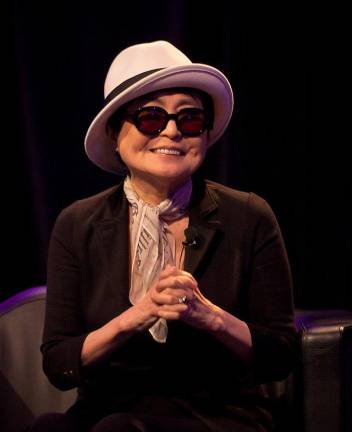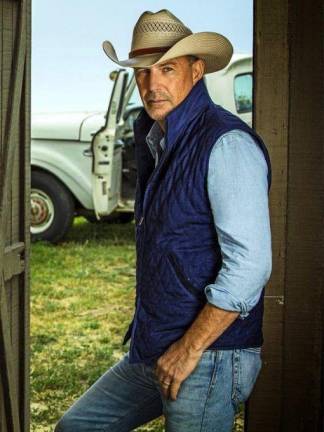Can NY Rebound? Yoko Leaving the Dakota, Latest City Dweller to Exit for the Leafy Burbs
New York has rebounded from tremendous lows twice in the 20th century, can it pull the same magic act again to make a 21st century revival?


Another one bites the dust. Yoko Ono is leaving NYC—The Dakota, in particular after 50 years–for her 600 acre farm in upstate Franklin, NY. Yoko, who celebrated her 90th birthday last month, joins the ranks of those who left during the pandemic–and never returned.
I’m still in the “New York or Nowhere” zone, but I have to confess, this native, Bronx girl was beginning to fade after hearing that Yoko–who had moved into the Dakota in 1973 with Beatle John Lennon in–was the latest to exit. I know some reports are saying the NYC population has returned to pre-pandemic levels. It just doesn’t feel that way to me. Maybe because most people are not back in the office full time–and give no indication they’ll ever return to a full five–day–a–week office routine.
It’s not just the empty storefronts which show no signs of being occupied any time soon that had me down, but the dwindling hustle and bustle that has always been Manhattan’s signature. There’s plenty of room to maneuver midtown streets during the week and I’ve seen the place look practically like a ghost town on weekends. (I mentioned to my husband Neil that thanks to the Paramount drama Yellowstone, starring Kevin Costner as John Dutton III, Montana was looking good. I could become a transplanted “Beth Dutton.” He shuddered at the thought of me on a horse with a rifle–with which I’d probably shoot off my foot.)
I couldn’t imagine what was going to help me turn this thinking around, and then I went to The Met for its new exhibit: Berenice Abbott’s New York Album, 1929.
In the year of The Great Depression, after spending almost a decade in Europe, the American photographer Berenice Abbott (1898–1991) boarded an ocean liner for a short visit to New York City and found it transformed. Abbott did what any photographer would do; she turned her camera lens on its skyscrapers, bridges, elevated trains, and neighborhood street life. She then pasted these “tiny photographic notes” into a standard black-page album, arranging them by subject and locale.
According to Metropolitan Museum of Art literature, “Consisting of 266 small black-and-white prints arranged on thirty-two pages, Abbott’s New York album marks a key turning point in her career—from her portrait work in Paris to the urban documentation that culminated in her federally funded project, Changing New York (1935–39).” There are also views of New York City by her contemporaries Walker Evans, Paul Grotz, and Margaret Bourke-White; and photographs from Changing New York.
Although the photos don’t depict breadlines and such, the exhibit got me thinking about the first-hand accounts of the time from my 100-year-old mother Angelina: People being evicted and living on the street with an apartment full of furniture; men joining the army even before the U.S. was involved in WWII --where the pay was $21 a month--because they couldn’t find any other jobs; and eating a whole lot of frittatas and escarole because it was cheap.
NYC bounced back from that only for me to experience New York in the ‘70s, which had Angelina practically wrapping her arms around my legs every time I went to leave the house. Central Park was a dangerous place, and one time in high school after I bought some dance paraphernalia at the Capezio store in Times Square, I called my mother who screamed in the phone, “Get out of there now!!!”
We were a city experiencing an unparalleled change, fueled by economic collapse and rampant crime leading the middle class to flee for the ‘burbs. The subway was called “the muggers express,” President Gerald Ford, although not in those exact words told us to “drop dead” in one of the most famous headlines of the Daily News when it was still selling over a million copies a day (compared to its current 50,000 or so a day) when we asked for a federally funded bailout; there were substantial cuts in law enforcement and it created a breach between the police and firefighters unions that has not healed to this day. The citywide unemployment figure topped ten percent. Our nickname was Fear City.
And once again, we bounced back.
What’s the saying? Three times the charm. If it could happen twice in the 20th century, it can happen now in the 21st.
I have no more answers than most, but as a lifelong city girl, I’ve seen things that make positive change that could be a start.
What if we supported local, small businesses so there’d be fewer abandoned stores; followed in Chicago’s footsteps and voted out politicians who make things worse not better; or have more neighborhood events and activities so denizens feel more connected and protective of their neighborhoods.
As the mosaic memorial in Strawberry Fields funded by Yoko Ono says: “Imagine.”
Lorraine Duffy Merkl is the author of several novels, most recently The Last Single Woman in New York City (Heliotrope Books).